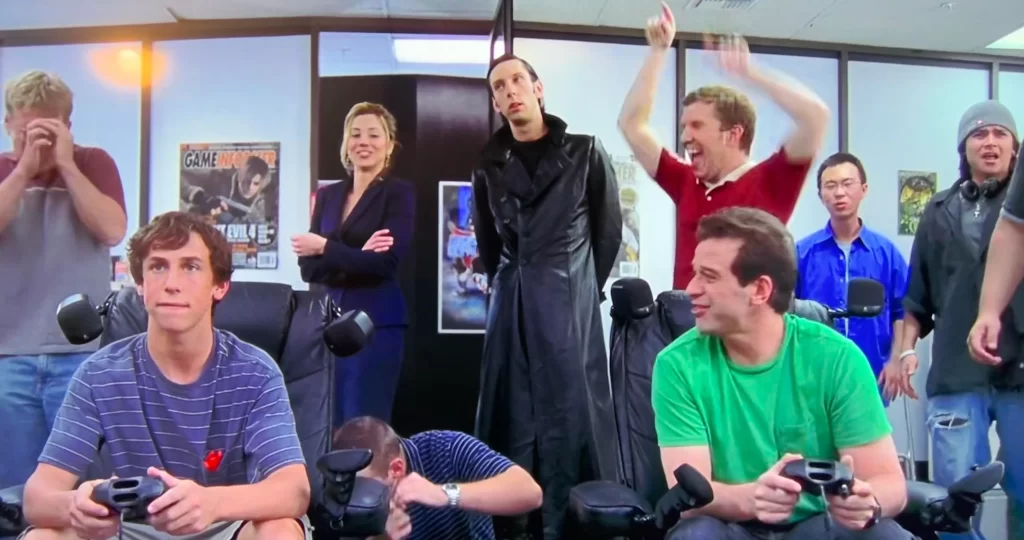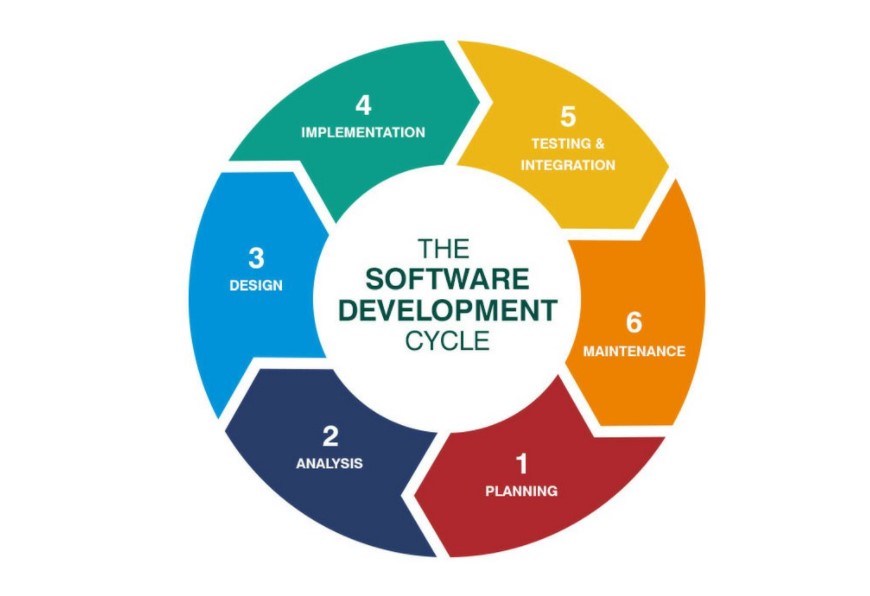Class hours: 10:05 – 2:45
Mr. Bohmann | wbohmann@ewsd.org
10:05 Today’s Notes & Attendance

- Breakout Games – be sure to upload. Do try out other games too. Link to games
- If you have not published, you are past due. Let’s tackle this afternoon or at lunch.
- When you arrive – Open Unity Hub. Create a New Project 3D(Built-In Render Pipeline) Core
- Name it ProBuilder
10:10 The Game Lifecyle and ADDIE

The development cycle for software is designed to help bring your ideas to reality. There are many types of development cycles (ADDIE, Waterfall, Spiral, Agile etc…). Some companies subscribe to one or more cycles to complete their projects. Whichever you learn / use, you will find that there are similarities among them.
The purpose is to work through an iterative process (design, implement, test) to get the best product. Remember the ET game? Not too much iterative design and the result is the Worst Video Game ever award.
The visual above outlines a very popular development cycle. Google “Game Development Cycles” or something close to that. Look at the image results….
Planning: brainstorming, storyboarding, discussing, writing and idea generating – who does what work, what work needs to get done, KanBan and Trello type boarding
- Brainstorming
- Prototyping / Storyboarding
- Game Proposal (Game Design Document) usually lives in this stage
- Feedback/Discussion with others to improve planning
Analysis: What will the game/player do. What are the goals in this stage, level, prototype. What assets and elements are needed for this project cycle. List all of the features of the game. Do you need music, sounds, art, what types to make your game authentic
Design: For some this is the fun part (or not). Sketching, coding, creating, developing the parts related to this development cycle. For example, one development cycle may be just on the player. So how big is the player, what does it do, look like, move, game mechanic. Describe what you code needs to do.
Implementation: Write and create the code / level / etc…described by your design so you have something to test at the next stage.
Testing: This is where the minimum viable product can be delivered and we can try out with users to find out if the other stages are represented here. By testing, we can save a lot of development time. Run your program and test all features to make sure they work.
Maintenance: If you find problems, you need to return to earlier stages to correct them, and then re-test. Debugging, updating, recording user feedback

10:20 The Game Design Document
A game design document (GDD) is a software design document that serves as a blueprint from which your game is to be built. While your game may change during development, the GDD serves as a guide for you and others on your design/development team.
A GDD is a good way to map out your vision for your game.
What to include on your GDD? Well, here is a very nice example of a Game Design Document – Silent Hill
To prepare for your last major assignment of the year (making your own game!), you are going to pull together a Game Design Document. I recommend Google Docs. This means that your game will require a GDD. I’ll link back to this outline but you may want to copy it and place on a GoogleDoc for your own reference for later.
The following is a suggested template (at minimum):
Name of the Game (or Working Title)
Team Members or just you
Elevator Pitch (One sentence briefly but concisely describing your game)
Example: Metro2033 is an FPS survival game set in the ruins of Moscow following nuclear war.
Description/Story
A one /two paragraph synopsis of the story of the game.
Core Gameplay
Describe how the game is played. Be specific and describe the features
Core Game Mechanics
List your core game mechanics and include details for each and how they work
Game Elements
Describe your world and the objects in it
Characters
List your characters and their names
Assets
What types of assets will make up your game
Sound
What types of sounds / sound effects will you have
Animation
What kinds of things will be animation
Player Controls – list them
Win Conditions – Describe them
Lose Conditions – Describe them
10:30 Quick Tour of ProBuilder Tools / ProGrids / Modular First Person Controller

Build, edit, and texture custom geometry in Unity using ProBuilder for in-scene level design, prototyping, blocking and setting up game environments. Many game devs also use the ProBuilder tools for production games. You’ve seen it in Crab Game from a couple years back.
Let’s take a spin through the tool.
Tools Used:
- ProBuilder – Go to Package Manager and Search Unity Registry for ProBuilder
- ProGrids – In Package Manager, Click on + button near and choose “Add Package By Name” then type in com.unity.progrids and progrids will install automatically
- Modular First Person Controller – install from the Asset Store
10:50 Break

11:30 CAWD Game Studio

CAWD Fun Games – Game Studio
- Pick a one button game to build from your group (or create a new game idea)
- Select a role(s)
- (Project Manager, Sound Design, Game Designer, Game Coder(s), Game Producer, Asset Creator, Texture Artist, UI artist / developer, storyboard artist, etc…. there are many roles, )
- Build a game
- This is a team effort. You will support each other and work together.
- Go as far as you can in this limited window and this afternoon
- This is the only thing you will be working on come Friday. A playable game is due by Wednesday of next week. Everyone, should be contributing…
To be successful as a team, you need to know the deliverables:
- One Game Design Document (Here is a template)
- A playable game (prototype is fine) in Unity IDE or published on Simmer.io
- A Home Screen with Game Title
- Play Button that opens the game
- Credits Button that opens Credits Screen (credits list roles of all team members)
My first suggestion is to talk about your one button games together. Have a time keeper. Work together to quickly select one of your games as the team choice.
My second suggestion is to think about what you’d like to contribute and divide up the roles. Having someone as the organizer will really help your team (game producer and/or project manager)
Then, break up the roles and be clear what you are working on. Commit to your role!
For example:
- Will – Game Developer and coder, set up game project, scenes and basic code
- Karen – Timekeeper and Project Manager, creating game design document, tracking deliverables
- Hannah – Visual Design Artist – color palettes, fonts, layout of Home, Credits Screen
- Ella – Asset creator / Texture Artist- Blender
- Libby – Sound Design, timekeeper
- Reese – Game Designer – strategy, core mechanics
12:15 Updates
At 12:15 a representative from your group will share out where you are, what you accomplished and what is next. Every team should have a Communication Director (in addition to their other roles)
12:25 – 12:55 Lunch

12:55 Independent Reading

1:20 Break

1:30 Design Challenge

1:55 Production Time and Guided Support
Team Game Work Session
2:40 Dailies

Dailies can be placed in the CAWD2 Dailies Folder on the CAWD2 Public Folders drive